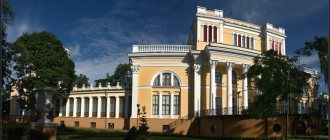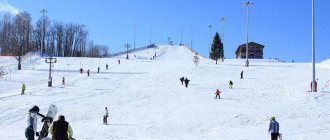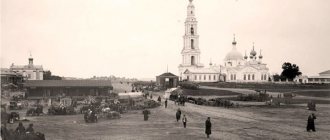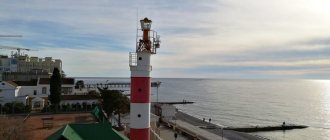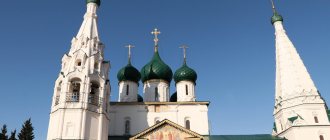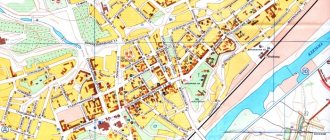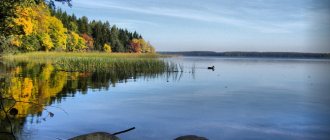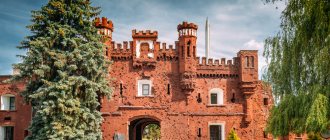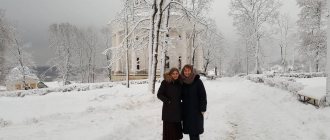The Krasnodar region is rich in waterfalls, caves and seascapes. In this article I will tell you about the most beautiful natural attractions of the Krasnodar region and tell you the most convenient way to get to them.
There are several ways to visit the natural attractions of the Krasnodar region: by car, taxi and as part of an excursion group. Some places can be reached by public transport.
Earlier I already told about the most beautiful, non-natural places in the Krasnodar region.
Black Sea coast
Anapa, Vityazevo, Sukko and Utrish
You can go to Anapa even for 1 day without an overnight stay, since getting there is only a couple of hours. In the off-season, here you can walk along the sandy beaches or the long upper embankment, admire the swans and feed them by hand, and collect brine shells, of which there are simply countless numbers on the sand here in the off-season. Fresh sea air and wind will clear your head and clear your thoughts.
And if you stay here longer, you can visit the village of Vityazevo, neighboring Anapa, with its endless stunning sand dunes, and if you are by car, you can drive further to the village of Blagoveshchenskaya and Bugazskaya Spit - this is a strip of sand and shell rock 300 meters wide, stretching 12 kilometers between the Bugaz estuary and the Black Sea.
A flock of swans on the beach in the center of Anapa in winter
Also 12 km from Anapa there is the village of Sukko, which is located in the valley of the Sukko River and is surrounded by mountains. 5 km from the village of Sukko there is an unusual, as it is called Cypress Lake Sukko, in which cypress trees grow right in the water. It is especially beautiful in the fall, when the cypress trees turn red in October-November. Further beyond Sukko there are the villages of Bolshoi and Maly Utrish, which are located on the territory of the Bolshoi Utrish nature reserve. These places abound with junipers, pistachios and Pitsunda pine, so the air here is simply extraordinary.
Novorossiysk
Cruiser "Mikhail Kutuzov" in Novorossiysk
From Krasnodar to Novorossiysk 151 km by car and 135 km by train. An ordinary train arrives in a little more than 3 hours, while the Lastochka train arrives in 2 hours and 20 minutes. By car you can get to Novorossiysk from Krasnodar in a couple of hours, so you can go here for 1 day without an overnight stay, just walk along the embankment along the sea and wonderful monuments, see the impressive military museum-cruiser “Mikhail Kutuzov”.
And if you stay a couple more days, you can visit the largest freshwater lake in the Krasnodar region, Abrau, and the Abrau Durso sparkling wine factory. Lake Abrau does not freeze in winter, and there is a beautiful art park on the shore near the plant. Also, 8 km from Novorossiysk there is another remarkable village with a famous winery - Myskhako.
Gelendzhik and its surroundings
Winter view of Gelendzhik and the Markotkhsky ridge
It is better to go to Gelendzhik with an overnight stay or for several days, since the road to it takes about 4 hours. Gelendzhik stands in a bay, framed by a magnificent mountain range. The Gelendzhik embankment, lined with paving stones and decorated with white balustrades in an antique style, flower beds and sculptures, stretches for 14 km along the entire bay. Its 9 km pedestrian zone attracts walkers, joggers, bicycles and scooters all year round. The abundance of Pitsunda pine in the city makes walking and jogging in the city especially useful.
There are many places for hiking around Gelendzhik - these include walks to the mountains with the stunning charm of Caucasian landscapes and open spaces, and to waterfalls and dolmens. Dolmens are found in many places in the Caucasus, but there are especially many of them in the vicinity of Gelendzhik. The dolmen culture is about 5 thousand years old; touching such an ancient history always leaves a deep imprint on the human soul.
Sochi
Mountain panorama at the Rosa Khutor resort
From Krasnodar to Sochi 285 km, can be reached by car or train. The Lastochka train runs to Sochi from Krasnodar; the travel time on it is 4.5 hours. It also takes about 5 hours to get there by car, since the route is mountainous. Therefore, going to Sochi from Krasnodar for 1 day will be too stressful; it is better to stay in Sochi longer, especially since there really is something to see there.
In addition to beaches, the sea, waterfalls, dolmens, Sochi has the mountain resorts of Krasnaya Polyana, where in winter you can go skiing and snowboarding, and in summer and in the off-season you can enjoy fantastic views from the cable cars, of which there is a whole network.
It is especially good there in the fall and spring, when there are fewer tourists. You can get to the mountain resort directly from Krasnodar by train Lastochka. You can also take another Lastochka directly from Krasnodar without transfers to the Olympic Park in Sochi, where the 2014 Olympics took place.
Abkhazia
New Athos Monastery at the foot of Mount Athos in Abkhazia
It’s not far from Sochi to Abkhazia. From the Sochi Olympic Park to the border with Abkhazia is only 4 km. Abkhazia is, of course, quite ruined and poorly maintained, but the beaches of Abkhazia attract many because they are much more spacious than in Sochi.
There are also plenty of natural attractions in Abkhazia, for example, Lake Ritsa or the New Athos Cave. We can also recommend visiting the monastery in New Athos, the botanical garden in Sukhumi, and Stalin’s dacha near Lake Ritsa.
The most beautiful waterfalls in the Krasnodar region
There are many large and small waterfalls on the territory of the Krasnodar Territory. Some of them are more famous, others less. But no one will argue that they give a special flavor to mountain landscapes and attract tourists.
Zmeykovskie waterfalls
- Coordinates: 43.635984, 39.816121.
The powerful mountain river Dikarka, dividing into several streams, creates a whole cascade of waterfalls. The first is the highest (about 30 m). It forms two cascades. The remaining water streams included in the Zmeykovsky waterfalls system do not have such impressive sizes, but they are no less picturesque than the “big brother”.
Under the 4th waterfall of the cascade there is a natural pool where the river waters drain before entering the main channel. The diameter of this bowl is about 10 m. Zmeykovsky waterfalls are located in a gorge where the sun's rays do not penetrate and twilight reigns. Because of this, it is always cool here. Next to the cascade there is a spring with clean and clear water that you can drink.
Kaverzinsky waterfall
- Coordinates on the map: 44.498124, 38.955500.
Local residents believe that the name of this water stream comes from the word “tricky”. The system includes two waterfalls – Big and Small.
The path to the Kaverzinsky waterfalls is not short - about 11 km. Many travelers, deciding to visit these places on a two-day excursion, take provisions and warm clothes with them. You can use the services of a guide who will tell you about the waterfalls and choose the best place to spend the night.
The path laid to the water streams will first lead to the Small Kaverzinsky waterfall, and then to the Bolshoi. The distance between them is about half a kilometer.
The local landscapes are very picturesque. Numerous species of trees and shrubs grow here. The Kaverzinsky waterfalls are especially beautiful in the fall, when the surrounding nature explodes with a riot of colors, changing its usual emerald attire.
Matsestinskiye waterfalls
- Coordinates: 43.645820, 39.830310.
A wonderful natural corner is located in the Khostinsky district of Sochi. The Matsesta River originates in these places. It forms water streams of the same name, falling down from a height. Few people know about these places, although the Matsestinsky waterfalls system includes 18 different streams, each of which has its own name.
Next to the river, which carries its waters along the bottom of the gorge, there is also a path leading to the waterfalls. If you go from the Chaysovkhoz, located nearby, the entire journey to the natural attraction of the Krasnodar Territory will take about half an hour. You can return back along the upper path.
Teshebskie waterfalls
- Coordinates: 44.371584, 38.625413.
These picturesque places, located near the village of Arkhipo-Osipovka, have several more names. Gebius or Bigius - these are the names of the water streams after the name of the mountain on whose slopes they are located.
The Teshebs River gives its name to the waterfalls emerging from its bed. Less common, but another name for this area is found - “Three Sisters”.
Three waterfalls forming a kind of cascade are very beautiful. The tallest of them, called the “Devil's Mouth,” rushes down from a height of 20 m, reminiscent of a rapid summer downpour. The second stream in the system is called “Lace”, its height is 17 m. The cascade ends with the “Grotto” waterfall. It is the smallest (only 6 m).
In the immediate vicinity there are several more mountain streams. There are observation platforms here; places where you can have a snack, relax or take a few photos for memory.
Waterfalls "Serenade of Love"
- Coordinates: 44.061365, 39.248959.
Beautiful water streams are often given romantic names - this is usually associated with some kind of legend relating to these places. The “Serenade of Love” waterfall was no exception.
There is a legend that once upon a time there lived a girl who was loved by the forest god Mizitha. But love between God and man is impossible. As a sign of his great feeling, Mizitha created three waterfalls in these places. People called them “The Font of Love”, “The Pool of Love” and “Serenade of Love”.
The path to these water streams lies through a relict forest, which itself is a unique natural miracle. The highest waterfall in the system falls from a height of 30 meters.
The “Serenade of Love” complex includes 13 more small mountain streams, but they discharge their waters down from heights not exceeding 8 m.
Azhek Waterfall
- Coordinates on the map: 43.710162, 39.819036.
This beautiful place is located near the village of Orekhovka. The Azhek waterfall is formed by the waters of a small mountain stream bearing the same name. Scientists believe that this water flow appeared here more than 40 thousand years ago.
In the gorge where the waterfall is located, due to the large and spreading trees, the sun's rays rarely reach. The canyon is almost always in twilight, which adds mystery and attractiveness to these places.
The stream that forms the waterfall originates on Sugar Mountain. There is snow on this peak for a long time, and the water in the Azhek River is cold even in summer. The mountain stream falls down from a height of about 10 meters. Its width is small - only 1.5 meters.
A small picturesque lake has formed at the foot of the waterfall. Its diameter is about 7 m. Some consider it somewhat gloomy, while others, on the contrary, consider it fabulous, corresponding to the spirit of local legends. But everyone recognizes the undoubted beauty of the Azhek waterfall.
Taman and the Sea of Azov
Seashells of the Azov Sea
In addition to the Black Sea, Krasnodar is not far from the Sea of Azov, it is only 150 km. Many people prefer the Azov Sea to the Black Sea because of sandy beaches with beautiful small shell rocks, and warmer water, since this sea is less deep and warms up better. Here you can pay attention to the villages beyond Temryuk, for example, the village of Golubitskaya or Kuchugury.
Cities and towns neighboring Krasnodar: Goryachiy Klyuch, Shapsugskaya, Plastunovskaya and others
In order to take a walk in the mountains or breathe fresh air, you don’t have to go somewhere hundreds of kilometers from Krasnodar. This can be done already 30 - 80 km from the city.
For example, the city of Goryachiy Klyuch is located 50 km from Krasnodar towards the Black Sea. It is one of the oldest balneological resorts in the Caucasus. It’s extremely easy to get here, even for one day, even for half a day. Goryachy Klyuch can offer fresh air, forest walks in hilly areas and mineral water.
Dante's Gorge in Goryachiy Klyuch
Also, 50 km from Krasnodar, behind the villages of Afipsky and Plancheskaya Shchel, there are beautiful mountainous places - Red Rocks and Mount Sober-bash.
You can also go to the village of Shapsugskaya, located 85 km from Krasnodar. In Shapsugskaya, among the beautiful tall and slender forest, you can see a dolmen and a mud volcano, ride horses or swim in the pool.
The village of Plastunovskaya, located 35 km from Krasnodar, can become a place of rest for the soul: there are 2 wonderful churches and the atmosphere of the village is extremely peaceful.
Temple in the village of Plastunovskaya
Lotus Valley
Ideal conditions for flower growth were found in the Krasnodar region in the village of Akhtanizovskaya. Lotuses of amazing beauty covered the entire surface of the local estuary in these places. The diameter of the flower of some specimens can reach up to 50 cm. Tourists vacationing in the Anapa and Temryuk area come to see this miracle of nature. Akhtanizovskaya’s fame was brought not only by lotuses. In the vicinity of the village there is a mud volcano. This is a common occurrence for the Taman Peninsula.
Republic of Adygea
Thermal spring of the Guam Gorge
From Krasnodar to the capital of Adygea - Maykop - only 120 km. The city of Maykop and the natural attractions of Adygea leave behind pleasant sensations and warm memories.
Mountains, caves, waterfalls, glaciers - the virgin nature of these places is rich in vegetation, unique topography and breathtaking views. The most famous places in Adygea are the Lago-Naki plateau and the Guam Gorge. The most frequently visited villages are Mezmay, Psebay, Guzeripl, Kamennomostsky, Mostovskoy.
Adygea abounds with hot mineral springs, in many villages of Adygea you can find a tourist base with hot mineral pools in the open air, the water in the pools is about 40 degrees, it is unusually pleasant and healthy to be in it even in summer, and in winter, when it snows, it is absolutely wonderful .
Castalian font
One of the most picturesque places in Kuban is located in Kabardinka at the foot of the Markhotsky ridge. It is located a few kilometers from Gelendzhik. Here, surrounded by juniper thickets, there is a trout farm. This place is especially interesting for children to visit. At the entrance to the Castalian font they are greeted by the pets of the local ornitarium. Pheasants and peacocks stroll majestically through large enclosures. A fountain flows in the middle of the central lake, and graceful wooden walkways and well-groomed stone paths lead to the windmill. The place is truly fabulously beautiful.
Crimea
Koyash pink lake on the southern coast of the Kerch Peninsula in September
The Crimean Peninsula is located immediately beyond the Taman Peninsula and the nearest Crimean city of Kerch is only about 220 km from Krasnodar. The road passes over the famous Crimean Bridge, now this new attraction attracts many tourists to Kerch. From Kerch to the next large settlement - Feodosia there is still about 100 km, to Sevastopol and Yalta about 250 km, to Evpatoria 275 km.
Kerch is an ancient port city on the shores of the Kerch Strait at the meeting point of the Black and Azov Seas; it is included in the list of the most ancient cities, along with Athens and Rome. There are many historical attractions, museums, as well as beaches and natural protected areas. The best beach in the city is considered to be the Arshintsevskaya Spit, which offers a magnificent view of the Crimean Bridge. So, even without going deep into the Crimean peninsula, you can have a great time.
Great Azish Cave
Despite the long history of its existence, the Azish Cave was equipped for tourists only in 1987. It is located in the Absheron region between two rivers - Belaya and Kurdzhips. It is surrounded by beech and fir forest. The cave is a unique natural object that is part of the Azish system. Inside the cave you can find many calcified slabs that were formed many centuries ago by the waters of an underground river.
Karachay-Cherkessia
Yak on the autumn highlands of Dombay
A little more than 300 km from Krasnodar is the Republic of Karachay-Cherkessia. The pearls of Karachay-Cherkessia are its mountain resorts of Dombay and Arkhyz. You can get to them through the capital of the republic, the city of Cherkessk. Cherkessk also has hot mineral springs, where you can swim on the way to Dombay or Arkhyz.
The Dombay mountain resort operates all year round. Here you can take cable cars to the tops of the mountains, where absolutely fabulous views of nearby glaciers and mountain peaks open up. There you can see a huge, furry yak and take a photo with it, sit in a cafe with a cup of tea or mulled wine, enjoying the overwhelming splendor of nature.
The Arkhyz resort is also all-season, from the beginning of May to September - the time for lovers of hiking, mushrooms and fishing, from December to March - for skiers and snowboarders. The opening of the cable car in Arkhyz took place in 2014, so the ski resort is quite new. Arkhyz is a very picturesque place with gorges, overhanging mountains, alpine meadows, mountain rivers and waterfalls.
Kabardino-Balkaria
View of the Eastern (5621 m) and Western (5642 m) peaks of Elbrus
The Republic of Kabardino-Balkaria neighbors Karachay-Cherkessia. Its capital Nalchik is located 500 km from Krasnodar.
Kabardino-Balkaria is notable from the point of view of tourism and recreation for the resorts of the Elbrus region. Elbrus is a stratovolcano with a height of 5642 meters above sea level - the highest mountain peak in Russia and Europe, included in the list of the highest peaks of the Seven Summits of the world.
The resorts of the Elbrus region have excellent ski slopes, a national park with a delightful combination of mountainous terrain and a unique climate.
Caucasian Mineral Waters
Pyatigorsk against the backdrop of the five-domed mountain Beshtau (1400 m) The
ecological resort region of Caucasian Mineralnye Vody includes cities such as Mineralnye Vody, including the resort of Kumagorsk and the resort area of Naguta, Pyatigorsk, Zheleznovodsk, Lermontov, Essentuki, Kislovodsk. They are all located next to each other. For example, the distance from Krasnodar to Pyatigorsk is 425 km, to Kislovodsk 450 km.
All these resorts are widely known for their healing mineral springs. All resorts are open year-round, many especially like to be here in winter - there are not many people, snowy peaks sparkle like diamonds in the sun, and there is royal silence all around. Winters here are mild, with little snow and plenty of sun.
You can get to these cities from Krasnodar by public transport by bus, and the Lastochka train runs once a day with stops in Mineralnye Vody, Beshtau, Pyatigorsk and Kislovodsk. “Lastochka” takes 6 hours to the final station of Kislovodsk, and about 5 hours to Pyatigorsk, Mineralnye Vody and Beshtau.
Lakes of love in the area of the Solokh-aul settlement
Located in the Solokh-aul area, the lakes of love are a little-known vacation spot in Kuban for tourists coming to the region. Dagomy troughs were called lakes of love. They are rock layers eroded by the river. Their shape resembles troughs through which a river flows. It flows from one body of water to another, shimmering in the sun with the blue-green tint of its surface.
Near the lakes there is a functioning monastery. Solokh-aul is considered the birthplace of the northernmost Krasnodar tea. You can find out its history at the local Koshmana estate.
North Ossetia, Chechnya
View of the Tseysky glacier from the gazebo of the Ossetian sanctuary Rekom
If you go even further through the Caucasus, then at a distance of 620 km from Krasnodar there will be the city of Vladikavkaz - the capital of the Republic of North Ossetia. This republic differs from its neighbors in that the population here mainly professes Orthodoxy, and the ancient traditional religion of their ancestors is also very strong - the worship of gods and the forces of nature. In this regard, there is some kind of special atmosphere in Ossetia.
In North Ossetia there are hot springs in the village of Biragzang, a mountain resort in the village of Tsey, a resort in the village of Dzinaga in the Digori Gorge. The Dargavsky city of the dead and the ancient Dzivgis fortress are also interesting. There are interesting museums and monasteries to visit in Ossetia.
Georgia, Armenia
February panorama of Tbilisi
From Krasnodar you can take a bus or car to Tbilisi and Yerevan. The distance by road to Tbilisi is 800 km, to Yerevan 1080 km. Buses from Krasnodar to Tbilisi and Yerevan run daily, travel time to Tbilisi is about 12 hours. You can get to Tbilisi, stay there for a few days, and then continue your journey to Armenia. There are regular transport links from Tbilisi to Yerevan and back. Russians do not require visas to stay in these countries.
You can also fly to Yerevan, the capital of Armenia, by plane from Sochi; sometimes airlines offer quite economical offers for this route. You can fly to Tbilisi, the capital of Georgia, by plane from Rostov-on-Don, also quite economically.
Park "Berendeevo Kingdom"
The “Berendee kingdom” in the Krasnodar region must be looked for in the Lazarevsky district. The creators of the park placed it in the valley of the Kuapse River. Characters from well-known fairy tales were placed surrounded by a unique landscape. Here you can see a waterfall with 7 cascades, the height of which is 27 meters. Natural mountain baths are filled with clean water in these places. Hornbeams, oaks and maples grow around them. In the thickets of bushes you can find hazel and several varieties of rhododendron.
Kalmykia
Golden Abode of Buddha Shakyamuni in Elista
Another interesting destination for traveling from Krasnodar is the Republic of Kalmykia and its capital, the city of Elista. Elista is a little more than 500 km from Krasnodar.
Kalmykia is the only region in Europe that professes Buddhism. Therefore, in Elista you can see and visit Buddhist temples and holy places. The Golden Abode of Buddha Shakyamuni, which is visible from every corner of Elista, the golden gate of Altn Bosch, the Stupa of Enlightenment, the Pagoda of the Seven Days and others.
Kalmykia is a steppe region, a reserve of steppe and desert landscapes, the Kalmyk saiga population, as well as many bird species. Kalmykia is also notable for its salt lakes, the largest of which is the beautiful and wild Lake Manych-Gudilo, whose water is twice as salty as the Black Sea. Manych-Gudilo water does not have any beneficial properties, but in the vicinity of the lake you can see wild mustang horses, and from March to June, tulip buds open on the tulip island on Lake Manych-Gudilo. But another Kalmyk lake, Bolshoye Yashaltinskoye, has a large supply of medicinal silt-sulfide mud with unique healing properties.
Complex “Cossack village “Ataman”
The village was recreated to its full size in 2009. Various buildings occupy several streets, corresponding to the description of the site from past times. Everything here is imbued with the atmosphere of life and everyday life of the Cossacks. Most of the exhibits and design elements are originals, which were collected almost throughout the Krasnodar Territory.
Photo of the Complex “Cossack village “Ataman”” taken from the VKontakte account: https://vk.com/atamani_kazachya
Astrakhan, Volgograd regions
Salt lake Baskunchak in the Astrakhan region
Further beyond Elista, 300 km, is the city of Astrakhan. This is a unique multicultural city, home to representatives of more than 100 nationalities. Astrakhan is located in the upper part of the Volga River delta, on the islands of the Caspian lowland. The main attraction of the city is the Astrakhan Kremlin. But as they say, what is worth going to Astrakhan for is balyk catfish, okroshka with roach and Astrakhan watermelons.
For lovers of natural beauty, Astrakhan can offer the most beautiful biosphere reserve, where in the lower reaches of the Volga delta you can see the most beautiful plants and the pride of the local flora - lotuses. The Astrakhan land is also rich in sand dunes, coastal forests, and winding river branches.
And the highlights of this area are the salt lake Baskunchak and Mount Bolshoye Bogdo. It is said that the percentage of salt in the water of Lake Baskunchak is 37%, which is higher than that of the Dead Sea. The water of the lake will give you an incomparable feeling of weightlessness, pushing your body to the surface. Also on the coast of Lake Baskunchak there are deposits of medicinal clays; in June-August, in addition to swimming, you can take mud baths.
Fountain "Art" or "Friendship of Peoples" on the Volgograd embankment
Lake Baskunchak can also be reached from Volgograd; the road will be about 180 km. Volgograd is also undoubtedly worthy of the traveler's attention - it has coastal landscapes of the Volga, museums, alleys, squares, memorials, fountains, a planetarium, and the largest hydroelectric power station in the European part of Russia. Mamayev Kurgan with its main monument, the Motherland, really looks impressive, and the embankment of the hero city is amazingly beautiful. The distance from Krasnodar to Volgograd is approximately 750 km.
Large cities closest to Krasnodar
And finally, about the 2 largest cities closest to Krasnodar - Rostov-on-Don and Stavropol. From Krasnodar to Rostov-on-Don there are about 270 km, they can be covered by car and bus in 3-4 hours or by train Lastochka in 3.5 hours. The distance to Stavropol from Krasnodar is 300 km, there is no direct railway connection in this direction; you can get to Stavropol from Krasnodar by car in 4-6 hours. Visiting these cities on a weekend, for example, can make the end of the week special and educational.
Rostov-on-Don
The monument to Rostovchanka on the embankment of the Don River
Rostov-on-Don is called differently: the Gate of the North Caucasus, the southern capital of Russia, the Combine and Don capital, and the nickname “Rostov-Papa” is also common. Rostov-on-Don, the largest city in the south of Russia, stretching along both banks of the Don, can delight guests with the elegance of architecture, an abundance of historical monuments, a variety of entertainment and creative cafes and restaurants.
Rostov-on-Don was one of the cities that hosted the 2022 FIFA World Cup, and the city was being renovated for this event. The Rostov embankment of the Don River has become even more beautiful after reconstruction; it is considered one of the main attractions of the city. This is an excellently equipped, well-maintained pedestrian area with a number of interesting monuments, sculptural compositions and art objects.
Rostov is famous for its theaters, the musical theater is one of the largest in Europe, the drama theater is made in the form of a huge tractor in honor of Rostselmash - the giant Rostov plant. The Rostov-on-Don railway drawbridge is classified as a world heritage site and was designed by Gustave Eiffel. Also, Rostov-on-Don is a city of more than a hundred freshwater springs, 15 have been developed to date. Only 40 kilometers separate Rostov from the shore of the Sea of Azov, so in summer you can combine a cultural and educational program with a beach holiday at sea, and in Rostov itself there are river and lake beaches.
Russian Gate - a monument of Ottoman architecture
Russian Gate in Anapa
Where is it located?
In the southern part of Anapa, on the territory of the 30th Anniversary of Victory Park.
Why is this interesting?
These gates became Russian only in 1828, when Anapa was liberated from the Ottoman yoke.
This is all that remains of the fortress, built in 1783. The fortress was the main stronghold of the Ottoman Empire in the North Caucasus. The slave market operated here, and military operations to capture cities were controlled from here.
Russian troops sought to destroy the fortress, but it was not easy to break through the numerous fortifications. In 1791, Anapa fell, which forced the Turkish side to conclude a peace treaty. Under the terms of this treaty, Crimea was ceded to Russia, and Anapa remained part of the Ottoman Empire.
With their aggressive foreign policy, the Turks repeatedly violated the terms of the treaty. This led to Russia declaring war on the Ottoman Empire in 1827. In 1828, the Russian army took the fortress and the city. Since 1829, Anapa became part of Russia.
On the territory of the Russian Gate there are many monuments dedicated to the events of those years. The fortress gates themselves received the status of a monument of Ottoman military architecture.
How to get there
The path through the territory of the 30th Anniversary of Victory Park to the Russian Gate passes through the embankment. You can get to the park by minibuses No. 2, 7, 25.
